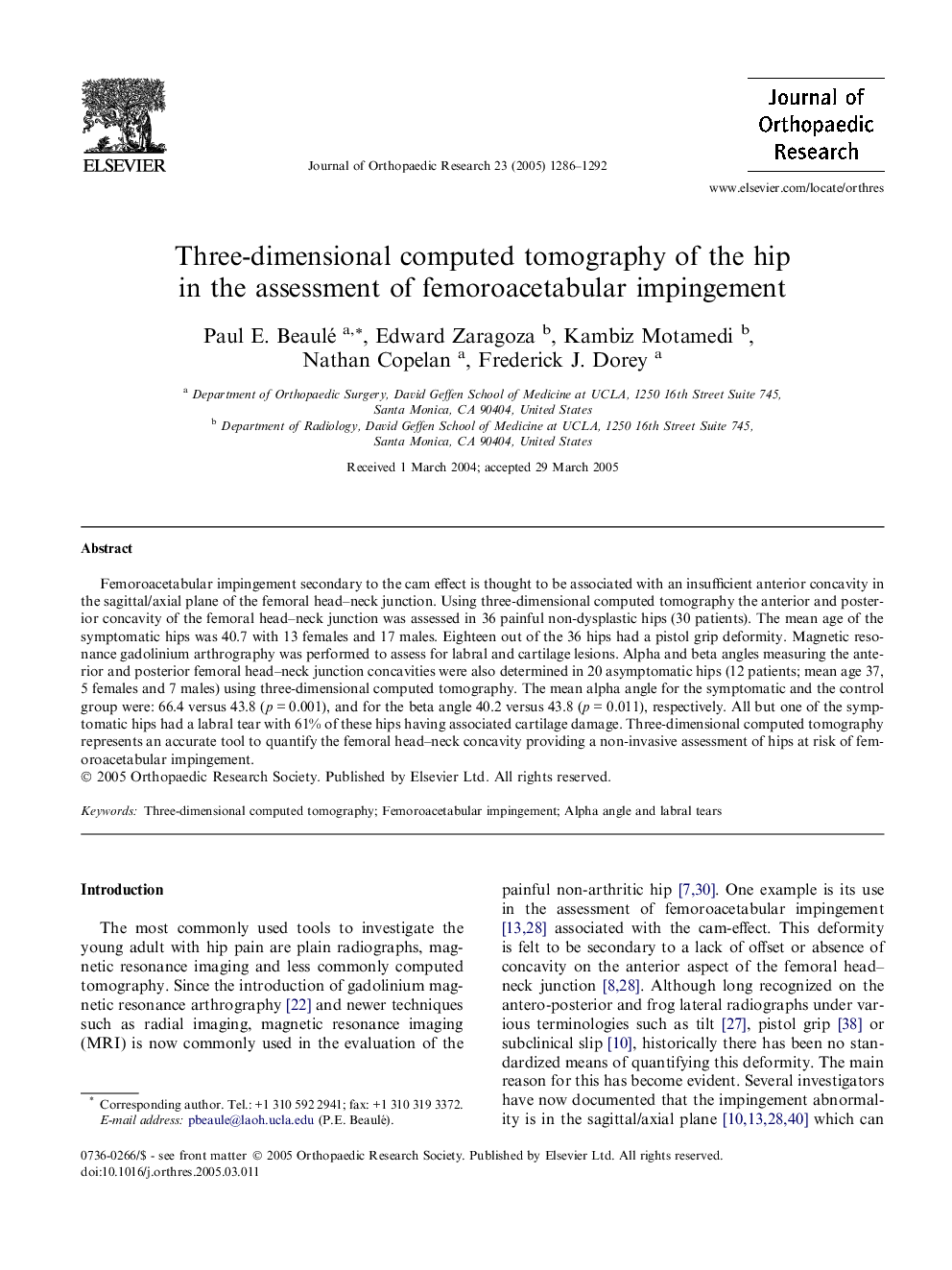| Article ID | Journal | Published Year | Pages | File Type |
|---|---|---|---|---|
| 9353857 | Journal of Orthopaedic Research | 2005 | 7 Pages |
Abstract
Femoroacetabular impingement secondary to the cam effect is thought to be associated with an insufficient anterior concavity in the sagittal/axial plane of the femoral head-neck junction. Using three-dimensional computed tomography the anterior and posterior concavity of the femoral head-neck junction was assessed in 36 painful non-dysplastic hips (30 patients). The mean age of the symptomatic hips was 40.7 with 13 females and 17 males. Eighteen out of the 36 hips had a pistol grip deformity. Magnetic resonance gadolinium arthrography was performed to assess for labral and cartilage lesions. Alpha and beta angles measuring the anterior and posterior femoral head-neck junction concavities were also determined in 20 asymptomatic hips (12 patients; mean age 37, 5 females and 7 males) using three-dimensional computed tomography. The mean alpha angle for the symptomatic and the control group were: 66.4 versus 43.8 (p = 0.001), and for the beta angle 40.2 versus 43.8 (p = 0.011), respectively. All but one of the symptomatic hips had a labral tear with 61% of these hips having associated cartilage damage. Three-dimensional computed tomography represents an accurate tool to quantify the femoral head-neck concavity providing a non-invasive assessment of hips at risk of femoroacetabular impingement.
Related Topics
Health Sciences
Medicine and Dentistry
Orthopedics, Sports Medicine and Rehabilitation
Authors
Paul E. Beaulé, Edward Zaragoza, Kambiz Motamedi, Nathan Copelan, Frederick J. Dorey,
